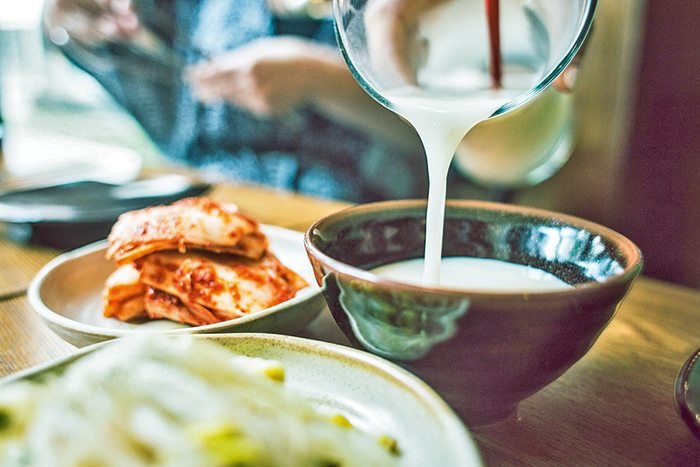With all the recent interest in fermentation, it’s no surprise that Korean traditional alcohol has been gaining attention. Known as sul, the brew is commonly made at home using a simple fermentation technique. Julia Mellor is a Korean Traditional Alcohol Specialist who educates English speakers about the history, culture and science of sul including makgeolli, a popular alcoholic beverage made of fermented rice.
“I’ve been working with Korean traditional alcohol for five years, and the one thing that is really unique about sul is that it’s best enjoyed fresh. This makes it virtually impossible to export because its shelf life is short and it needs to be refrigerated”. Mellor says the best way to experience Korean alcohol is to learn how to brew it at home. ‘It’s actually a really simple process, you only need rice, water and the fermentation starter, called Nuruk”.
Sul has thousands of years of history, but it really took off in the Joseon dynasty [1392-1897], the last royal dynasty before modern times. “It was the Confucian dynasty and it was known as a time of art, poetry, and the development of culture”. Korean alcohol flourished at this time because it was illegal to brew so everyone was brewing in their home. The difference between Sul and the popular Japanese drink Sake is the fermenting starter. “In sake a refined single flavoured mould is used and it’s a very specific objective in terms of flavour profile. In sul the fermentation starter is inoculated by air so its very regional its very wild”.
The Korean war [1950-1953] brought devastation to the country, and was a rice famine in 1965 led to a ban on all brewing with rice. Many brewers then turned to other starches like wheat flour. All you need is a starch to brew sul so they found whatever was cheap and on hand and in abundance. This type of brewing continued until the late 1990s when the rice and home brewing bans were lifted.
Over the last 100 years of brewing there have been so many interruptions, which is why the world hasn’t really been introduced to sul. Now a lot of people are opening craft breweries and people are starting to research the original recipes. Mellor is particularly interested in makgeolli, having founded the ‘makgeolli Mamas & Papas Korea’, which offers tasting tour experiences, brewery tours, and brewing education. “makgeolli is a tiny slice of a tiny pie of the alcohol sold in Korea”. makgeolli only makes 4% of alcohol sales in Korea, but Mellor says well made makgeolli has a complex and rich taste that is delicious. “For a long time is was considered a ‘farmer’s drink because many people would drink it instead of eating because its heavy sediment makes you feel full.”
Making it at home
Mellor says one of the best ways to enjoy makgeolli is to make it at home. “It can be as simple or as complicated as you like.” First you wash, soak and steam the rice to an al dente texture. You can used any type of rice but short grain sticky rice is good because it has a lot of amalyse pectin on the outside of the rice which is food for the yeast. “Once the rice breaks down into sugar there is more sugar available for the yeast to convert to alcohol so your resulting alcohol is a lot more sweeter”.
The reason sake is so clear is because the rice is polished to remove the outer starch. Once the rice has cooled down you add water and a Korean fermentation starter. “Then you mix it altogether by hand, letting the water combine and absorb.” For the first two days, morning and night, you take the lid off the jar to oxygenate the mixture. The mixture is then left sealed for about 10 days. The temperature needs to be around 18-30C, any hotter and it will go sour.
To check if the brew is ready, strike a match and put it over the open jar. If the flame goes out, it means there’s limited CO2 and fermentation is complete. To filter the brew, you can use cheese cloth or stockings to strain over a clean bowl. “It is impossible to make the same brew twice because it is all about the reaction.”







